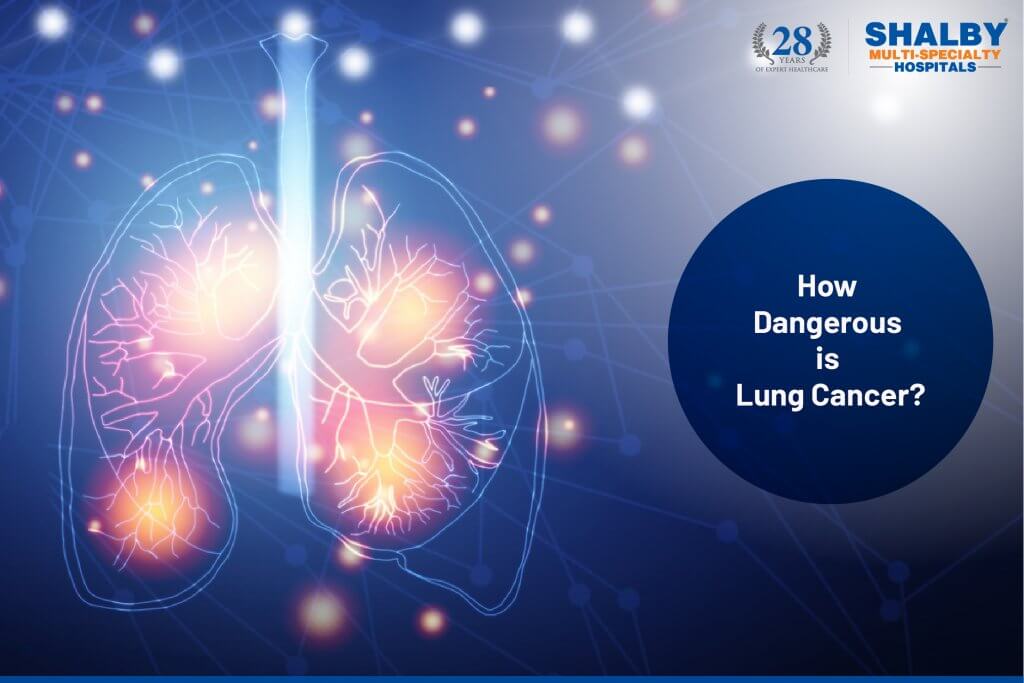
According to the Journal of Thoracic Oncology, lung cancer in India accounts for 5.9% of all cancers and 8.1% of cancer-related deaths. The worldwide data accounts for lung cancer as the second most common cancer around the globe. It is a leading cause of death with an estimated 1.8 million deaths each year followed by breast, colorectal, and prostate cancer combined. In recent years, the rigorous lung cancer treatment in Ahmedabad has been successful in treating hundreds of lung cancer patients. It, however, remains the most difficult to treat cancer.
Lung cancer is defined by the abnormal growth of cells in the lung. The two types of lung cancer non-small cell lung cancer (NSCLC) and small cell lung cancer (SCLC) show differentiated growth of cells in the organ. Out of the two, NSCLC accounts for more than 85% of the cases.
It has been proved that tobacco smoking is the prime cause of lung cancer. It also accounts for more than 80% of cancer cases. The Oncologist in Ahmedabad, however, have also proved that smoking may not be the only reason for lung cancer. More than 270,000 lung cancer cases per year are diagnosed in patients with no history of smoking. The other factors also contribute to the uncontrolled growth of lung cells. These include:
The Hospitals in Ahmedabad diagnose around two-thirds of lung cancer patients at a late stage. At this later stage, the cancerous cells are also found in other parts of the body. The lung cancer treatment in Ahmedabad is started immediately upon diagnosis. Despite rigorous treatment and technological advancement, the survival rates of lung cancer are still poor as compared with other cancer types. Usually, a 5-year survival rate is considered in patients with late-stage cancer.
The treatment strategy for lung cancer patients is decided by the Oncologist in Ahmedabad by considering various factors such as the cancer stage, size of the tumour, and position in the lung. Usually, the treatment is a combination of the following therapies:
Lung cancer is challenging to treat. Hence, prevention is the only way. Moreover, the right diagnosis and treatment at Hospitals in Ahmedabad like Shalby play a pivotal role in improving the lives of the patient.
In our modern lives, the adage “Sitting is the New Smoking” has become increasingly relevant. But beyond this familiar warning lies a more alarming truth: our daily choices significantly impact our health. The combination of prolonged inactivity, indulgence in junk food, smoking,...
India is one of the fastest-growing economies in the world, with a population of over 1.3 billion people. However, this economic and demographic growth also brings many challenges for the healthcare system, especially in terms of managing the burden of non-communicable diseases...
Just like the women were oppressed for centuries together, the story of men is no exception. While women have been the primary victims of gender-based oppression, men have also been subjected to unfair and unrealistic expectations that have caused them physical and...